The Benefits of the Reverse Lunge
Most people prefer forward lunges because they feel more natural and are easier to learn. But challenging yourself to master the reverse lunge will provide unique benefits, translating to muscle gain, good stability, and healthy knees.
Lunging back is beneficial because you place less stress on your front knee and engage your glutes and hamstrings more effectively.
Another benefit of the movement is that the stability requirements are more significant, leading to superior core activation and improved balance. As a result, you become more athletic and better able to perform many gym exercises and everyday tasks.
Our most important tip for the reverse lunge is to perform each repetition slowly and with good body control. Aim for fluid motions and avoid rushing repetitions.
You can integrate reverse lunges near the middle of your leg training. Start with bodyweight lunges and gradually introduce external weights as you learn how to do the exercise correctly.
Level of Exercise: Intermediate
How to do a Reverse Lunge
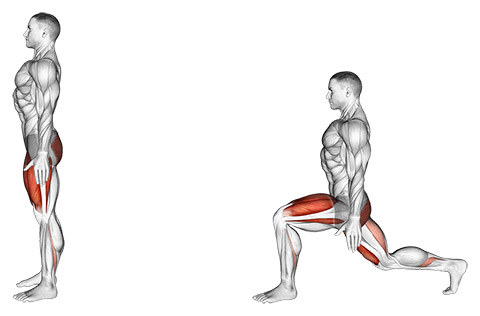
- Assume the starting position by standing tall with your shoulders back, abs tight, gaze directed forward, and hands on your hips.
- Have your feet in a comfortable stance (roughly shoulder-width apart) with your toes pointing slightly out.
- Take a breath and bring the right leg back, landing on the ball of the right foot. Immediately sink into a lunge by bending your front leg.
- Descend until your front thigh is almost parallel to the floor and your rear knee is an inch or two from the floor. The stride length will vary from person to person, but you should avoid using short and extended steps. A good stance is when your front shin remains relatively vertical (knee over ankle) as you descend.
- Pause at the bottom and engage your front leg to bring yourself back to the top.
- Bring the right leg to the starting position, maintain the shoulder-width apart stance, and exhale as you reach the top.
- Take another breath and lunge back with your left leg, landing on the ball of your left foot.
- Keep alternating throughout the set and perform equal reps for both legs.
What muscles does the reverse lunge activate?
The primary muscles that work during a reverse lunge are the quadriceps, which make up the front of our thighs and produce knee extension (straightening of the leg) (1). Our quadriceps engage as soon as we lunge and become increasingly active as we move back to the top position. The muscle group is also vital for knee stability and hip flexion, which occurs as we lunge back.
Our glutes are the second muscle group with an active role during reverse lunges. The muscle makes up a large percentage of the buttocks, and its primary function is hip extension, which occurs as we start moving up after lunging (2). Our glutes also extend each leg back and promote hip stability.
Similarly, our hamstrings contribute to lunges by assisting the glutes with hip extension and promoting stability at the knees and hips (3).
As mentioned above, the movement also leads to better midsection activation because of its higher stability demands. The abs, obliques, and other muscles flex isometrically, contributing to torso rigidity. Our back musculature engages similarly to keep the spine stable, and our shoulder blades retracted.
Reverse Lunge Vs. Forward Lunge
The reverse and forward lunge are similar in many ways. Both exercises feature identical movement patterns, train the same muscles, and have similar ranges of motion. Performing either movement will promote muscle and strength gain in your lower body, improve your balance, and reduce the risk of side-to-side muscle imbalances.
An apparent difference between the two exercises is that you initiate a forward lunge by bringing one foot forward, whereas the reverse lunge requires you to move the leg back. Despite being similar, the two exercises feel different and impact your body in unique ways.
Regular lunges activate your quadriceps from the moment you step forward. The muscle group continues to work and becomes increasingly active as you lunge back to the starting position (4). You also feel your glutes engage, but their involvement is somewhat limited, and you mostly feel them at the bottom of each repetition.
In contrast, a reverse lunge doesn’t feel as demanding on the quadriceps initially but instead leads to superior glute and hamstring activation. Your quads also contribute, but their involvement becomes noticeable as you reach the bottom and move up.
Reverse Lunge Variations and Modifications
1. Curtsy Lunges
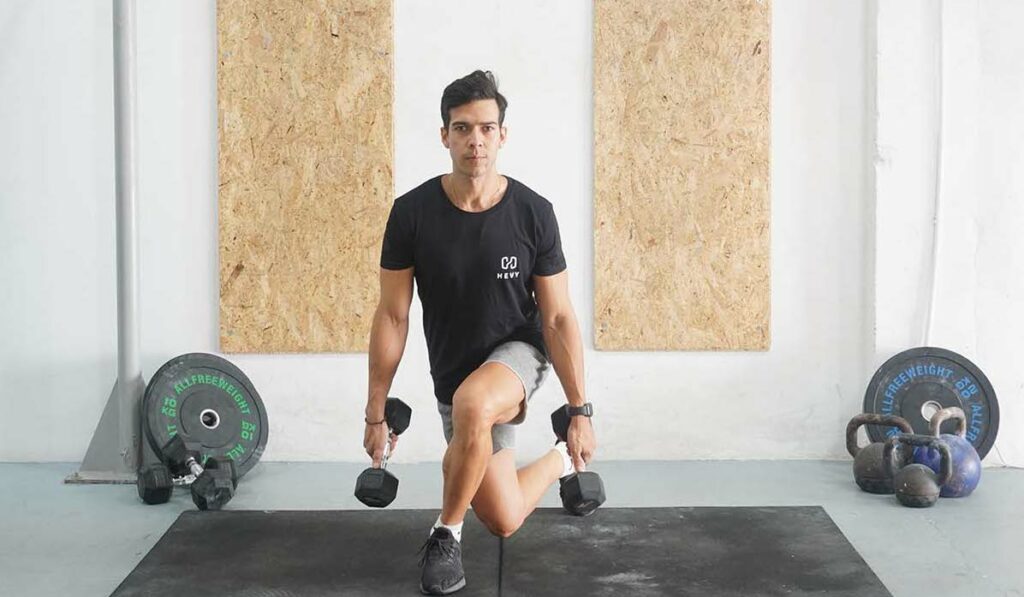
Curtsy lunges are a more challenging variation of the reverse lunge. The movement leads to fantastic glute activation and contributes to your overall balance. Instead of lunging straight back, you must bring your leg back and position the foot behind your front leg, descending into a curtsy.
2. Stationary Reverse Lunges
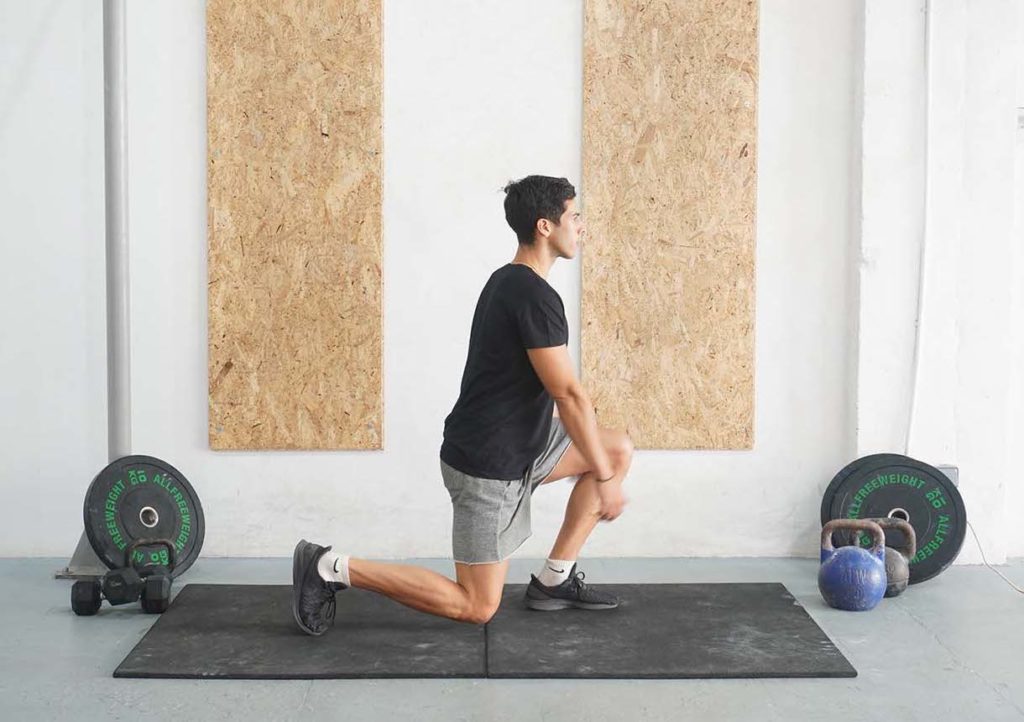
Stationary reverse lunges are a beginner-friendly version of the exercise that works well for people who struggle with balance. First, bring one leg back and support yourself on the ball of the foot. Once in position, perform as many reps as possible and bring the leg forward. Next, bring your opposite leg back and perform the same number of reps.
3. Barbell Reverse Lunges
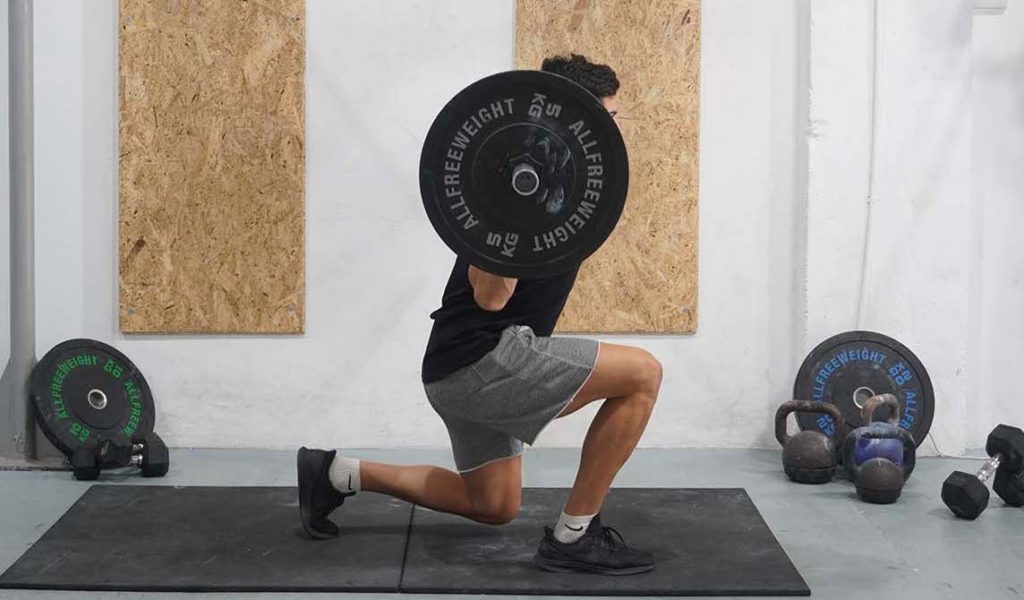
The barbell reverse lunge is another challenging variation that promotes muscle overload and develops lower body strength. You must place a barbell on your upper back, similar to how you would for a regular squat. From there, perform the exercise as you usually would.
Mistakes to Avoid
Lunging Close or Too Far Back
One of the most common mistakes people make with reverse lunges is extending the back leg too little or too much. Having your back leg too close to your body causes your front knee to travel over your toes, which can place stress on the joint. In contrast, having the back foot too far from your body makes it more challenging to keep your balance. The ideal stance is where your front shin remains vertical (knee over ankle) as you sink into a lunge.
Rounding Your Back
The second common error with lunges is rounding your back, which leads to instability, limits your performance, and contributes to poor posture. Avoid the mistake by bringing your shoulder blades back and down as you set yourself up for the movement, and maintain that rigid position until you’re done.
Similar Exercises to the Reverse Lunge
Split Squat (Dumbbell)
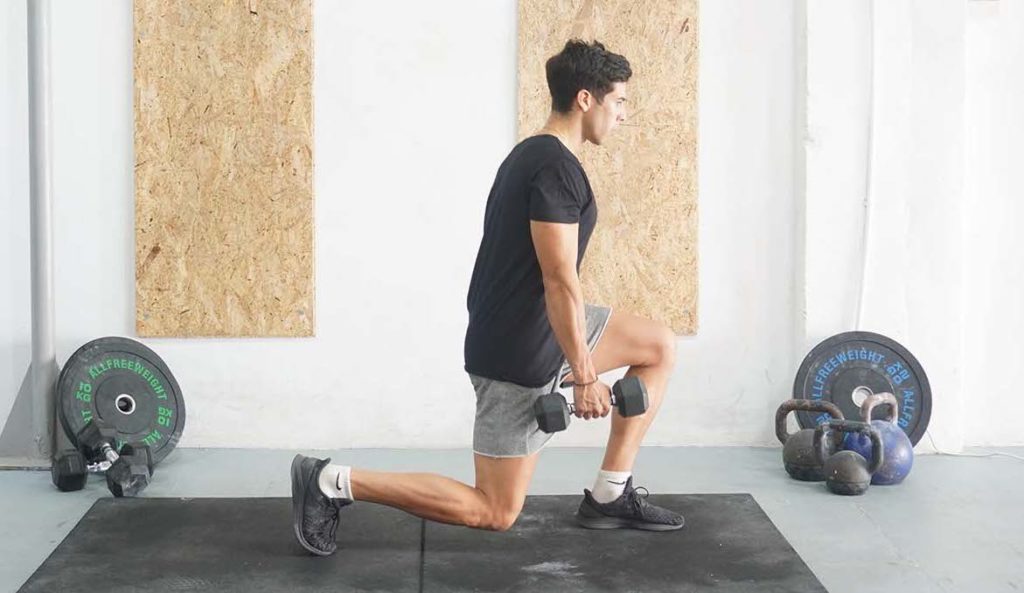
Split squats are a practical accessory exercise that offers many of the benefits you gain from reverse lunges. The two activities work one leg at a time, train the same muscles, and have similar ranges of motion.
Glute Kickback (Machine)
Machine glute kickbacks are not necessarily the same as reverse lunges, but the exercise is valuable for strengthening your posterior chain. As a result, your reverse lunge performance improves, and you find it easier to maintain your balance.
Lunge (Dumbbell)
Lunge (dumbbell): As discussed in a previous point, forward and reverse lunges are similar. Both movements offer fantastic benefits, and you should perform the one you enjoy more. You can switch between the two exercises every couple of months to keep your training fun and fresh.

